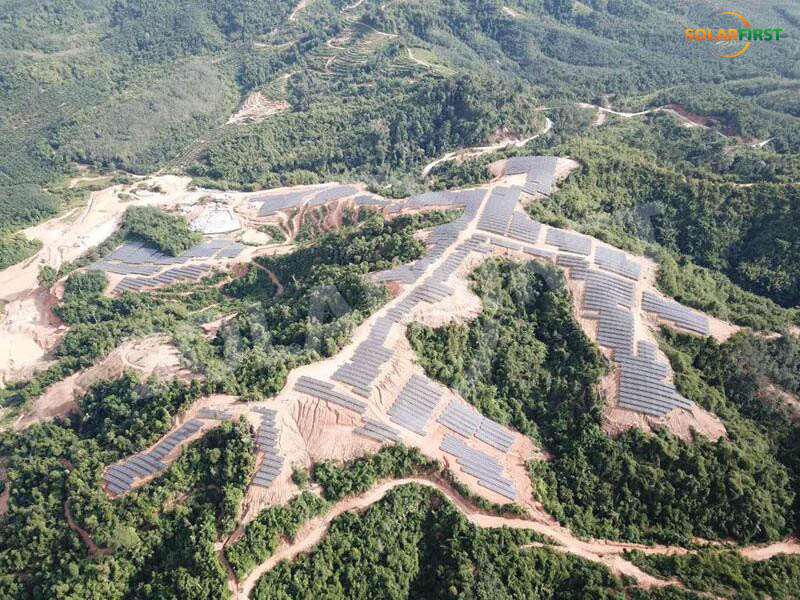According to the 2022 Statistical Report on Renewable Energy Generation recently released by the International Renewable Energy Agency (IRENA), the world will add 257 GW of renewable energy in 2021, an increase of 9.1% compared to last year, and bring the cumulative global renewable energy generation to 3TW (3,064GW).
Among them, hydropower contributed the largest share at 1,230GW. The global PV installed capacity has grown rapidly by 19%, reaching 133GW.
The installed wind power capacity in 2021 is 93GW, an increase of 13%. Overall, photovoltaics and wind power will account for 88% of new renewable energy capacity additions in 2021.
Asia is the largest contributor to new installed capacity globally
Asia is the largest contributor to the world’s new installed capacity, with 154.7GW of new installed capacity, accounting for 48% of the world’s new installed capacity. Asia’s cumulative installed renewable energy capacity reached 1.46 TW by 2021, with China adding 121 GW despite the Covid-19 pandemic.
Europe and North America added 39 GW and 38 GW respectively, while the US added 32 GW of installed capacity.
Strategic Cooperation Agreement of the International Renewable Energy Agency
Despite the rapid progress in the deployment of renewable energy in the world’s major economies, the International Renewable Energy Agency (IRENA) emphasized in the report that renewable energy generation must grow faster than energy demand.
Francesco La Camera, Director-General of the International Renewable Energy Agency (IRENA), said, “This continued progress is yet another testament to the resilience of renewable energy. Its strong growth performance last year provides countries with more opportunities to gain access to renewable energy sources. Multiple socioeconomic benefits. However, despite encouraging global trends, our Global Energy Transition Outlook shows that the pace and scope of the energy transition are far from sufficient to avoid the dire consequences of climate change.”
The International Renewable Energy Agency (IRENA) earlier this year launched a strategic partnership agreement scheme to allow countries to share ideas for achieving carbon neutrality goals. Many countries are also taking steps, such as using green hydrogen to maintain energy supply. According to figures released by the agency, hydrogen will account for at least 12% of total energy if the global climate target is to stay within the 1.5°C temperature of the Paris Agreement by 2050.
Strategic Cooperation Agreement of the International Renewable Energy Agency
Despite the rapid progress in the deployment of renewable energy in the world’s major economies, the International Renewable Energy Agency (IRENA) emphasized in the report that renewable energy generation must grow faster than energy demand.
Francesco La Camera, Director-General of the International Renewable Energy Agency (IRENA), said, “This continued progress is yet another testament to the resilience of renewable energy. Its strong growth performance last year provides countries with more opportunities to gain access to renewable energy sources. Multiple socioeconomic benefits. However, despite encouraging global trends, our Global Energy Transition Outlook shows that the pace and scope of the energy transition are far from sufficient to avoid the dire consequences of climate change.”
The International Renewable Energy Agency (IRENA) earlier this year launched a strategic partnership agreement scheme to allow countries to share ideas for achieving carbon neutrality goals. Many countries are also taking steps, such as using green hydrogen to maintain energy supply. According to figures released by the agency, hydrogen will account for at least 12% of total energy if the global climate target is to stay within the 1.5°C temperature of the Paris Agreement by 2050.
Potential for developing green hydrogen in India
The Indian government signed a strategic partnership agreement with the International Renewable Energy Agency (IRENA) in January this year. The camera emphasized that India is a renewable energy powerhouse committed to the energy transition. Over the past five years, India’s cumulative installed renewable energy capacity has reached 53GW, while the country is adding 13GW in 2021.
To support the decarbonization of the industrial economy, India is also working to build a green hydrogen-powered energy supply chain. Under the partnership reached, the Government of India and the International Renewable Energy Agency (IRENA) are targeting green hydrogen as an enabler of India’s energy transition and a new source of energy exports.
According to a research report published by Mercom India Research, India has installed 150.4GW of renewable energy capacity in the fourth quarter of 2021. Photovoltaic systems accounted for 32% of the total installed renewable energy capacity in the fourth quarter of 2021.
Overall, the share of renewables in total global power generation expansion will reach 81% in 2021, compared to 79% a year earlier. Renewables’ share of total power generation will grow by nearly 2% in 2021, from 36.6% in 2020 to 38.3% in 2021.
According to statistics from the International Energy Agency, renewable energy power generation is expected to account for 90% of the world’s total new power generation in 2022.
Post time: Apr-22-2022


